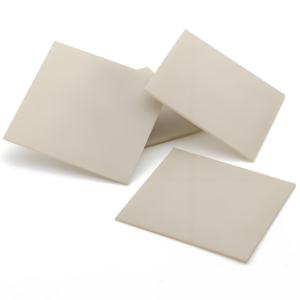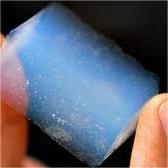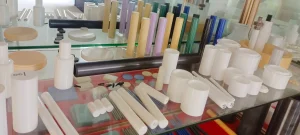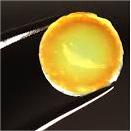Professional industry ceramic supplier, silicon nitride, silicon carbide, aluminum nitride and any other kinds of ceramics.
1. Introduction
In a significant development reported just hours ago, a leading advanced ceramics manufacturer announced a breakthrough in sintering technology that enhances the thermal shock resistance of silicon carbide crucibles by over 25%, enabling safer and more efficient processing of reactive metals like titanium and rare earth alloys. This innovation underscores the ongoing evolution of silicon carbide (SiC) as a cornerstone material in extreme-environment applications.

Silicon carbide crucibles are specialized containers engineered to withstand exceptionally high temperatures, corrosive environments, and thermal cycling—conditions that would degrade or destroy conventional ceramic or metal vessels. Their unique combination of mechanical strength, thermal conductivity, and chemical inertness makes them indispensable in industries ranging from foundry operations to semiconductor research.
2. What Is a Silicon Carbide Crucible?
A silicon carbide crucible is a high-performance vessel fabricated primarily from silicon carbide—a compound of silicon and carbon known for its exceptional hardness, thermal stability, and resistance to oxidation. Unlike traditional clay-graphite crucibles, SiC crucibles offer superior longevity and purity, especially when handling molten non-ferrous metals such as aluminum, copper, and zinc.
These crucibles are manufactured through processes like reaction bonding (RBSiC), sintering, or nitride bonding, each yielding distinct microstructures and performance characteristics tailored to specific operational demands.
3. Key Properties and Advantages
Silicon carbide crucibles exhibit several critical properties that justify their widespread industrial adoption:
- Exceptional thermal conductivity (up to 120 W/m·K), enabling rapid and uniform heating
- High thermal shock resistance, minimizing cracking during rapid temperature changes
- Outstanding chemical inertness against molten metals and slags
- Mechanical strength retention at temperatures exceeding 1,400°C
- Low thermal expansion coefficient, enhancing dimensional stability

These attributes collectively reduce downtime, improve melt quality, and extend service life compared to alumina (Al2O3) or zirconia (ZrO2) crucibles in many applications.
4. Comparison with Other Advanced Ceramics
4.1 Boron Carbide vs Silicon Carbide
While boron carbide (B4C) surpasses silicon carbide in hardness and neutron absorption, it is significantly more expensive and less thermally conductive. For crucible applications requiring thermal management and cost efficiency, silicon carbide remains the preferred choice.
4.2 Silicon Nitride and Alternative Crucible Materials
Silicon nitride (Si3N4) offers excellent fracture toughness and is used in specialized crucibles—often produced by a silicon nitride crucible factory for laboratory or aerospace applications. However, silicon nitride crucibles are generally less thermally conductive than SiC and more complex to fabricate. Similarly, zirconia crucibles excel in oxygen-free environments but suffer from phase instability at high temperatures without stabilizers like yttria.

5. Applications Beyond Crucibles: The Versatility of Silicon Carbide Ceramics
The utility of silicon carbide extends far beyond crucibles. The same material forms the basis for numerous high-performance components:
- Silicon carbide ceramic tiles and RBSiC silicon carbide tile blocks for wear-resistant linings
- Silicon carbide ceramic columns and rings for filtration and structural support
- Silicon carbide burner nozzles and bricks for industrial furnaces
- Silicon carbide tubes, including thermocouple protection tubes and porous ceramic tubes for high-temperature gas handling
- Silicon carbide discs, grinding discs, and sanding discs for precision machining
- Even consumer-grade items like silicon carbide ceramic baking dishes, dinner plates, butter dishes, and casserole dishes leverage SiC’s thermal resilience for oven-to-table use
This breadth demonstrates silicon carbide’s role as a foundational material in both industrial and domestic advanced ceramics.
6. Manufacturing and Customization
Modern silicon carbide crucibles are often custom-engineered to meet exacting specifications. Techniques such as isostatic pressing, extrusion, and CNC machining allow for precise geometries, including lids, spouts, and reinforced rims. Custom silicon nitride heat shields and silicon nitride plates are similarly tailored for niche thermal management roles, highlighting the synergy between different advanced ceramic systems.
The availability of high-purity silicon nitride powder and high purity aluminum nitride granules further enables the production of composite or hybrid components where thermal conductivity and electrical insulation are both critical.
7. Market Trends and Future Outlook
Driven by demand in electric vehicle battery production, semiconductor manufacturing, and green metallurgy, the global market for silicon carbide crucibles and related advanced ceramics is projected to grow steadily. Innovations in additive manufacturing of ceramics and nanostructured SiC composites promise even greater performance envelopes in the near future.
8. Conclusion
Silicon carbide crucibles represent the pinnacle of high-temperature containment technology, offering unmatched durability, purity, and efficiency. As industries push toward higher operating temperatures and cleaner processing, the role of silicon carbide—and advanced ceramics more broadly—will only expand. Whether in a foundry melting aluminum or a laboratory synthesizing novel alloys, the silicon carbide crucible remains an essential, high-value tool in modern materials processing.
Our Website founded on October 17, 2012, is a high-tech enterprise committed to the research and development, production, processing, sales and technical services of ceramic relative materials such as Silicon. Our products includes but not limited to Boron Carbide Ceramic Products, Boron Nitride Ceramic Products, Silicon Carbide Ceramic Products, Silicon Nitride Ceramic Products, Zirconium Dioxide Ceramic Products, etc. If you are interested, please feel free to contact us.





